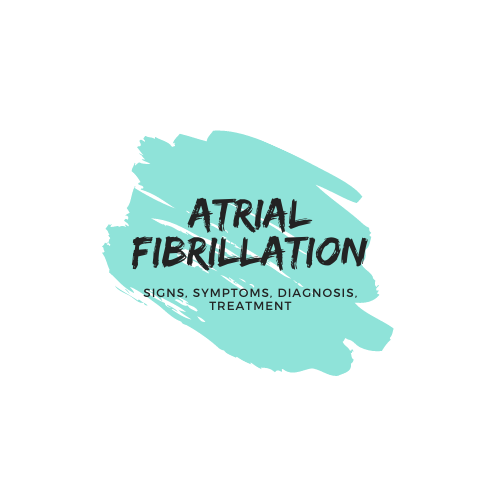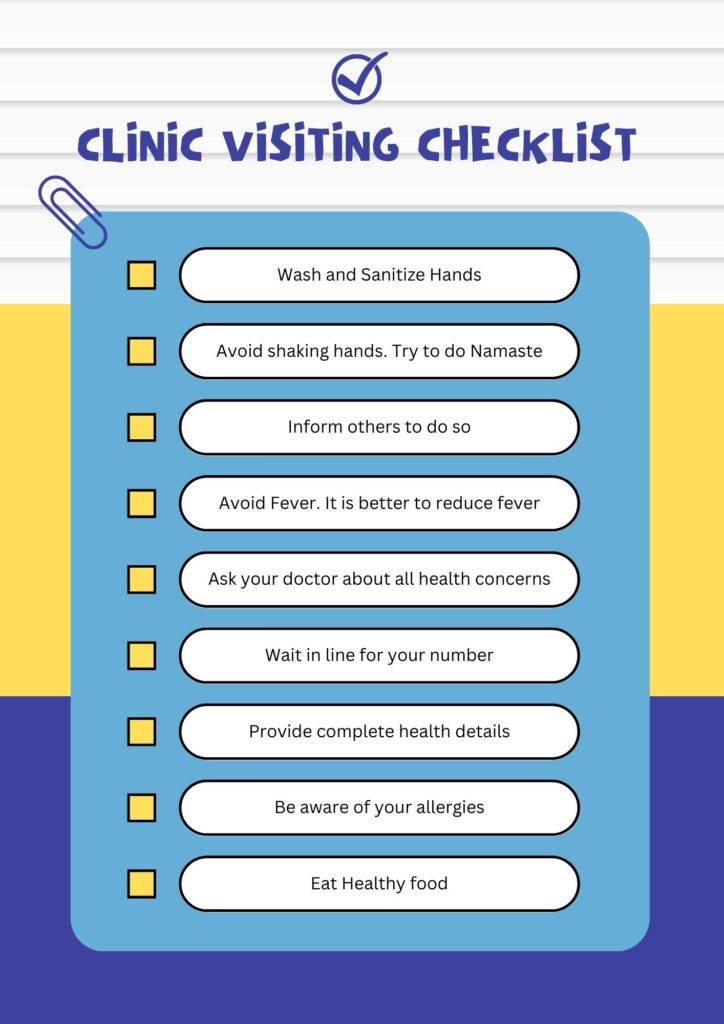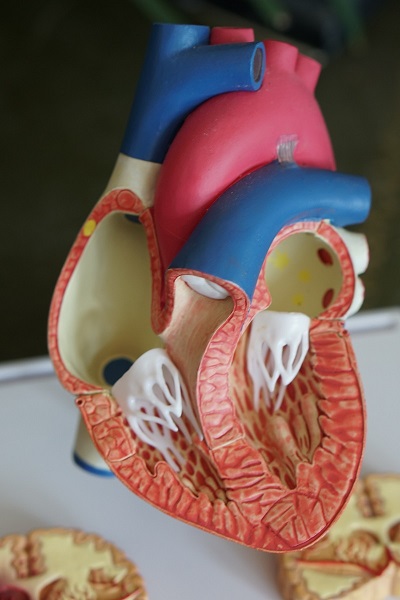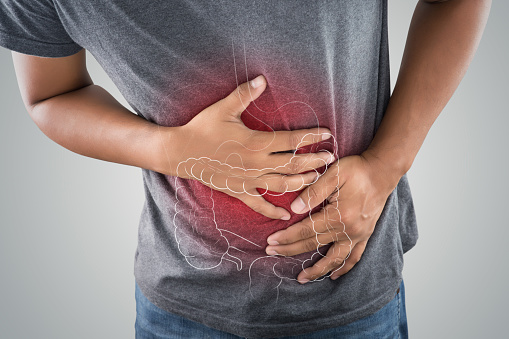Today we will speak about Atrial Fibrillation. What is this disease? It is a state where the heart rate is very fast and is not in a regular pattern. This happens when the pressure or demand of functioning from the heart has increased. It can lead to stroke, heart failure or other complications of the heart. When we speak about atrial fibrillation, we are essentially speaking about the two chambers of the heart which are above the ventricles. When the heart or the upper chambers of the heart go into fibrillation; they are out of coordination with the lower chambers.
Table of Contents
- Patterns of the disease
- Signs and symptoms of Atrial Fibrillation
- ECG pattern of atrial fibrillation
- Causes of atrial fibrillation
- Risk factors leading to atrial fibrillation
- Complications of atrial fibrillation
- How to prevent Atrial fibrillation?
- How to diagnose atrial fibrillation?
- Treatment of atrial fibrillation
- Lifestyle and home remedies to control it atrial fibrillation
- External Reading
Patterns of the disease
This pattern leads to heart palpitations, weakness, pain in the chest area, shortness of breath or breathlessness. This may happen without any previous warning. True episodes of atrial fibrillation make come or go without any warning, but they do not go away completely. To bring back the functioning of the heart in a normal manner, it needs treatment by using medicines or otherwise.
To read complete details about the Human Heart, Click here.
Atrial fibrillation is not life-threatening, but it limits the value of life by a large extent. The biggest concern in atrial fibrillation is the formation of blood clots. It can happen due to irregular functioning and non-coordinated functioning of the heart. The other concern is that the blood clots may move from the heart and may go towards other organs. Examples are like the brain which can cause further severe concerns.
Signs and symptoms of Atrial Fibrillation
Atrial fibrillation can start without any warning and the person may not have any symptoms whatsoever. Even if the person goes for a physical examination, there would be no remarkable discovery before it real symptoms starts. Some of the signs and symptoms that a person should be aware of during atrial fibrillation are:
- Palpitations in the heart: Palpitations that are racing in type they are very irregular and because a lot of discomforts
- Weakness in the chest area
- Inability or limited ability to perform any physical exercise or movement
- Constant fatigue
- Lightheaded
- Dizziness
- Breathlessness
- Pain in the chest area
- Patterns of atrial fibrillation
Persistency of Atrial Fibrillation
Atrial Fibrillation may be occasional for persistent. It may be long-standing or it may be permanent. When the atrial fibrillation is occasional it is coming and going in nature. The atrial fibrillation comes and lasts for a few minutes or few hours. Such episodes may last for a week or even less than that and may go away and come back.
When it becomes persistent the normal rhythm of the heart does not come back. It does not function in a normal manner.
The atrial fibrillation becomes persistent and continuous for more than a year it becomes long-standing persistent atrial fibrillation
The last stage which is permanent atrial fibrillation; normal heart rhythm does not come back at all. Even when the person is taking medications or has had any treatment the Atrial fibrillation stays and may lead to the formation of blood clots.
ECG pattern of atrial fibrillation
During Atrial fibrillation, the normal waves of an ECG are completely disturbed. The P wave shows many dips. T wave which is for re-polarization of the heart becomes completely up and down because of the inconsistent and non-coordination of the ventricles. R waves are seen, but the time duration in between each R wave is inconsistent. The heart does not pump at regular intervals and thus hampering the functioning of the heart. Many times the restoration of normal function of the heart is only by an electrical wave by outside media.
Causes of atrial fibrillation
As we have noted until now, atrial fibrillation is an irregular and non-coordinated pattern of the heart which leads to chaotic electrical signals. This results in a irregular heart rhythm and a very high heart rate with ranges between 100 to 175 beats per minute. Note that the heart function is based on nodes called the Sinus node. If it does not match, it leads to a regular pattern of the heart.
Some of the causes may be:
- High blood pressure
- Heart attack
- Coronary heart disease
- Abnormal function of the heart valve
- Stimulants like
- Medications
- Caffeine
- Tobacco
- Alcohol
- Diseases of the lung
- Viral infections
- Post surgical trauma and
- Sleeplessness
Risk factors leading to atrial fibrillation
Some of the risk factors leading to atrial fibrillation are:
- Age
- Heart diseases
- High blood pressure
- Chronic diseases
- Alcohol drinking
- Obesity
- Binge eating and
- if there is any family history
The older a person gets, higher are the chances of developing the disease. Problems related to heart like:
- Valve problems
- Congenital concerns
- Congestive heart failure
- Disease of the coronary arteries or
- History of heart attack and surgeries can lead to atrial fibrillation.
Blood pressure if not controlled either by Lifestyle changes or medications can lead to increased risk. Thyroid concerns, sleeplessness, metabolic problems, chronic diabetes, lung diseases can cause Atrial fibrillation. People who drink alcohol abusively, binge drinking and other drugs can lead to atrial concerns. Consequently, people with heavy body weight and obesity also have a risk of developing atrial fibrillation.
Complications of atrial fibrillation
People who have suffered or are suffering from atrial fibrillation can complicate in to strokes or heart failure. Consequently, chaotic rhythm of the heart causes the blood to pool up or stagnate in the upper chambers of the heart. This leads to the formation of clots and which have a high possibility of dislodging and getting towards the brain. This can cause a stroke in brain. Once the brain suffers from a stroke, the area of the brain which gets affected diminishes the function related to it in the body.
Organ failure can happen if the stroke affects that particular part of the brain controlling the particular organ system. Atrial fibrillation can also lead to a weakened heart. This can ultimately lead to failure of the heart. In this heart failure the body does not get enough blood circulation and which leads to further damage and atrophy of the heart areas.
How to prevent Atrial fibrillation?
Eventually, prevention remains the best way of reducing any heart-related concerns and Atrial fibrillation is not an exception to it. Eating a healthy diet which is actually a Balanced diet is very helpful for the heart.
- Keeping a good physical activity
- Avoiding smoking
- Keeping a good healthy weight
- Keeping caffeine and alcohol at limited levels and
- Fighting stress in the best manner does good to reduce its effects.
It is very helpful to keep away atrial fibrillation. Stress as it is, increases the heart-load, increases the heart rate and the chances of getting it also increase. Some over-the-counter medicines usually given for cold and cough can also trigger a rapid Heartbeat. They should thus be used with caution.
How to diagnose atrial fibrillation?
Your doctor diagnoses Atrial Fibrillation on the basis of:
- Signs and symptoms
- Medical history and
- By performing physical examinations done by various instruments.
To start with, an electrocardiogram – ECG helps to find out the electrical activity waves of your heart. Further, a Holter monitor helps to monitor your heart activity for 24 hours or longer.
After the ECG, and an echo-cardiogram guides to understand the movement of the heart. A transducer helps to understand how the heart moves and thus detect structural damages. Blood test can like Troponin test detects any blockages coming up in the coronary arteries.
A complete stress test that involves exercise testing helps understand heart load taking capacity. Finally, a chest X-ray aid to visualize the lungs and the heart. They help diagnose any related concerns to atrial fibrillation.
Treatment of atrial fibrillation
The treatment of atrial fibrillation focuses on resetting the rhythm of the heart. So that the fibrillation percentage starts to reduce and the person can live a better quality of life. The second possibility in the treatment is to prevent the formation of blood clots. It thus helps reduce the chances of further complications like Stroke in the brain and congestive heart failure.
The course of the treatment plan depends on the condition that the person is currently facing. The first preference always goes to resetting the rhythm of the heart and controlling the rate.
Resetting the heart rhythm
The heart rhythm can be mechanically reset in two ways. One is called Electrical cardio version and the second is Cardio version with the help of medication. In electrical cardio version, the technician of the cardiologist delivers an electric shock through the help of plates or nodes connected to your chest area.
The electrical shock stops the heart’s electrical activity for a few moments and then restarts. This helps the heart to restart functioning in its own normal rhythm. As a result, the pattern which is disturbed gets back to the normal state.
Cardio version is done with the help of anti-arrhythmic medicines. They help to restore the normal rhythm of the sinoatrial node and the atrioventricular node. The major medicines given in medicine induced cardioversion are:
- Anti-arrhythmic
- Beta-blockers and
- Calcium channel blockers
3 major procedures
When surgical intervention is required, the three major procedures done in such state are:
- Catheter ablation
- Maze procedure with cryotherapy
- Atrioventricular node ablation
When your doctor decides not to go through any of the intervention methods; they may want to focus on preventing blood clots. Medicines like anticoagulants are used to thin the blood and thus reduce the chances of forming blood clots. Warfarin has been one of the most traditional blood-thinning drugs used under doctors’ instructions.
One of the major side effects of Warfarin is tremendous amount of bleeding. It is difficult to stop. New anticoagulant medicines for blood-thinning medicines are now available. They do not have that many side effects as compared to Warfarin.
Left Atrial appendage closure
Another procedure that can be useful in controlling atrial fibrillation is known as Left Atrial appendage closure. This involves an insertion of a catheter through a vein, usually in the leg and all the way up to the heart chamber in the atrial floor. Eventually through this, a device is inserted and a closed pack is formed in the Atrium. This helps to reduce the blood clots as well as fibrillation.
Lifestyle and home remedies to control it atrial fibrillation
Atrial fibrillation is that kind of a disease which requires medication or surgical intervention. There are many ways by which these diseases can be controlled even in earlier stages when the person start to feel such concerns.
Some of the easiest ways are to eat food that is healthy for the heart. This includes having a diet that is low on sodium salt, low on solid fats. One should consume a lot of fruits, vegetables and whole grains.
Regular exercise, high amounts of physical activity or at least a moderate amount of physical activity helps to reduce the load on the heart by strengthening the muscles.
If you are smoking cigarettes, cigar and tobacco, then you should look to stop smoking habits. Check your weight and see if you are in the healthy range. If you are not in the healthy range, then try to reduce your weight slowly and steadily. Keep your blood pressure and cholesterol levels within limits. Try not to reduce your weight too fast but in a controlled manner, alcohol drinking should be at a controlled level. If you are taking medications, try to keep a regular follow up with your doctor and consult them if any of your symptoms and signs worsen.
External Reading
If you wish to read more details on Atrial Fibrillation, check the Wikipedia article over here.










